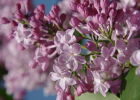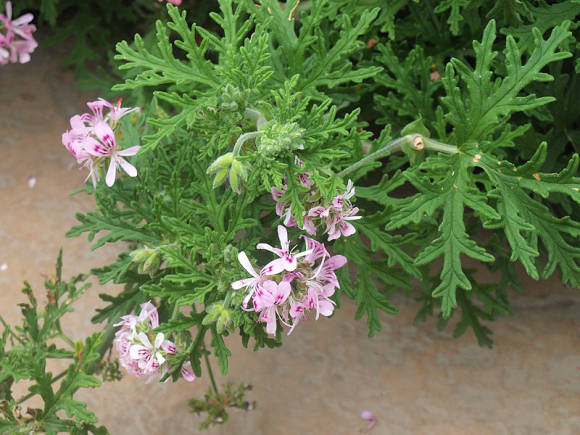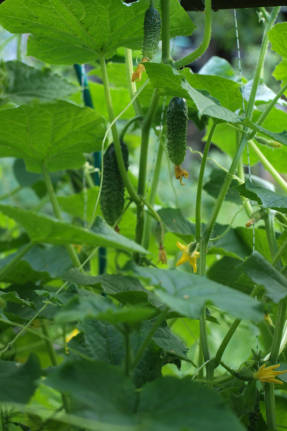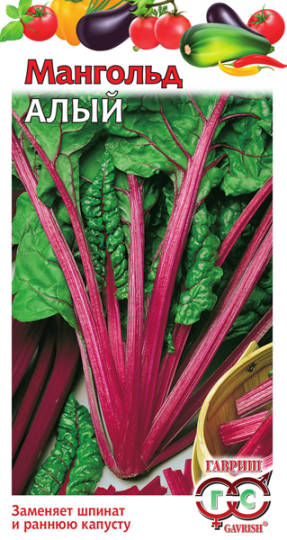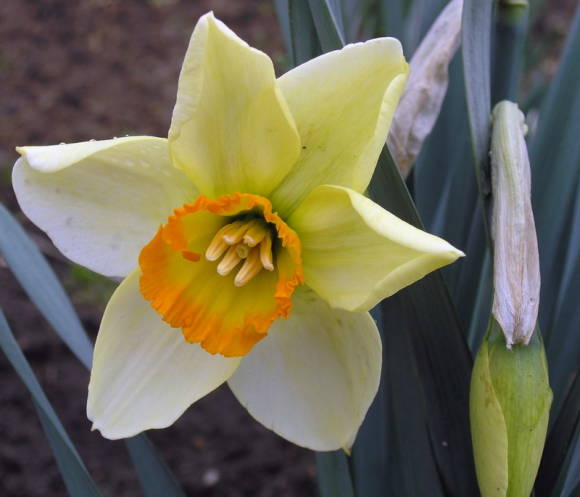 |
Recently, gerbera is gaining more and more popularity not only as a cut crop for bouquets, but also as a potted houseplant. Gerbera serves as a wonderful interior decoration, and in summer it can be planted in the garden (patio gerbera varieties). According to NASA research, this plant is good at cleaning indoor air from benzene and other harmful impurities.
About the history of culture - on the page Gerbera.
Dwarf hybrid varieties of Jameson gerbera are grown in pots (Gerbera jamesonii) (See Gerber Jameson). In nature, it can be found in the natural sandy pastures of South Africa. This is a perennial herb with large, covered with silky hairs dissected leaves, collected in a basal rosette. The inflorescence is a basket on a long, straight peduncle. In hybrids, the color of the marginal ligulate flowers can be different: red, yellow, orange, white, cream, only the blue color is absent.
But keeping a purchased blooming gerbera at home can be difficult. This culture is very capricious, requires special conditions and is often used as an original miniature live bouquet. Although, if it is possible to provide it with very bright light, combined with a moderate temperature, high air humidity and good ventilation, then you can have a flowering plant in the house all year round.
It is important to get a strong and healthy plant. It is desirable that the gerbera has unopened buds. Do not buy a weak plant, with signs of disease or traces of damage to the leaves by insects.
Home care
Lighting... For good flowering and full growth, it is important that the gerbera receives enough light for 12 hours a day. The best place for her is in full sun. It can be too hot on a sunny windowsill in summer, and the plant can overheat and burn the leaves, but without sufficient light it will not bloom. On hot days, to reduce the temperature, the gerbera should be kept in a well-ventilated area and shaded slightly from the sun at midday. In winter, additional bright artificial lighting will be required. Watering... It is better to water the plants from above, excluding the ingress of water on the leaves. If the pot is small, and the rosette of leaves is spreading, then you can water it using the method of careful flooding. The substrate between waterings must necessarily dry out from above, even a slight drooping of leaves is allowed in between waterings, but from the moment the buds are formed, it is better not to bring it to this state. It is preferable to water in the morning, so that by nightfall all the leaves and the top layer of the soil have time to dry out. With waterlogging, when the soil remains damp for a long time, the gerbera rots. But complete drying of the soil should not be allowed even in winter, when watering is reduced. Temperature. The optimum temperature for gerbera growth is + 20 ° C during the day and + 17 ° C at night. During flowering, it is better to keep the daytime temperature around + 15 + 20, and at night + 12 + 15 ° C. In such conditions, with good lighting, gerbera can bloom all year round. At temperatures above +30 and below + 10 ° C, flowering ceases and the risk of fungal diseases increases. The minimum allowable temperature is + 5 ° C. Air humidity. Good growth requires a relative humidity of about 70-80% with good room ventilation. Spraying the leaves is unacceptable. Soil and transplant. With a lack of oxygen, gerbera roots are very susceptible to root rot, so it will grow better in a small pot and loose soil with an acidity of pH 5.0-5.5. Slightly acidic land mixtures based on high-moor peat with the addition of perlite are well suited for her. When transplanting, do not deepen the base of the plant; the rosette of leaves should be completely above the ground surface.Transplant the plant only in case of good development of the entire volume of the pot by the roots; this can be done at any time of the year at a content temperature above + 10 ° C. Top dressing applied during active growth and flowering of gerbera. If the plant is resting, then it is not fed. During growth, until the buds appear, they are fed with a universal complex fertilizer with an approximately equal ratio of basic nutrients (NPK 1: 1: 1). From the moment the buds appear, the proportion of potassium is increased (NPK 1: 1: 2). The composition of dressings must include trace elements, especially magnesium and iron. Pruning... The stem of the gerbera is very shortened, so the plant does not need pruning. It is only necessary to remove faded peduncles in time to stimulate the development of new ones, as well as dead leaves in order to prevent the occurrence of fungal diseases. Reproduction. Gerbera is a short-lived plant that quickly loses its decorative effect. Once every 3-4 years, dividing the outlet will be required, removing old specimens and planting young plants. This breeding method will allow you to keep the variety you like. Gerberas can be grown from seeds that are now on sale. They must be fresh, as they quickly lose their germination. Seeds are sown in shallow boxes filled with loose peat substrate with the addition of sand or perlite, which has been pretreated with fungicides (for example, Ridomil Gold). The best time for sowing is February-March. From above, the seeds are sprinkled with a small layer of soil, about 0.5-1 cm thick. The top of the box is covered with transparent film or glass to maintain high humidity. At a temperature of about + 20 ° C, seeds germinate in 1-3 weeks. Transplanting into small pots is carried out at the stage of 4-5 true leaves. The first buds may appear in 4-6 months, but it is recommended to remove them for better development of the rosette. Pests and diseases... Thrips and whiteflies can often be found on gerbera. There are also aphids, mining insects, spider mites. About pest control - in the article Houseplant pests and control measures. Gerbera is highly susceptible to fungal diseases, especially gray rot (a gray bloom is observed on flowers and leaves), powdery mildew (a white powdery coating appears on the upper side of the leaves), anthracnose (brown spots with a yellow border appear on the leaves), root rot (plant wilting is observed , the disease is not treatable). In case of occurrence of such diseases, it is necessary to treat with appropriate fungicides, destroy the affected dead parts of plants. In order to prevent their occurrence, provide the plant with good ventilation, observe the watering regime and keep the leaves dry.



